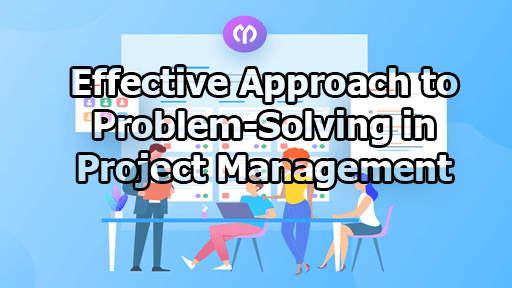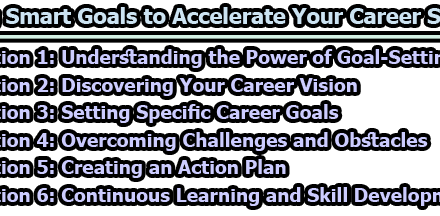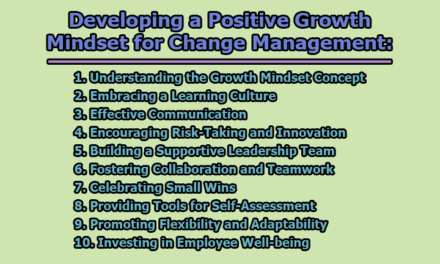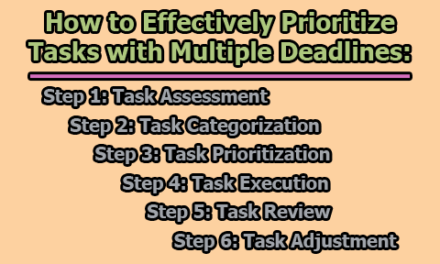Effective Approach to Problem-Solving in Project Management:
Project management is a complex discipline that requires a range of skills and competencies to ensure the successful completion of projects. One of the key skills that project managers must possess is effective problem-solving. Problems and challenges are inevitable in any project, and the ability to address them efficiently is crucial to keep the project on track and within scope. In the rest of this article, we will explore the effective approach to problem-solving in project management.
Need for Effective Problem-Solving in Project Management:
Project management involves planning, executing, monitoring, and closing projects. At each stage of a project’s life cycle, problems or obstacles can arise that threaten to derail the project, increase costs, or extend timelines. Whether it’s a technical issue, resource constraints, scope changes, or stakeholder conflicts, project managers must be equipped to handle these challenges effectively. Effective problem-solving in project management serves several crucial purposes:
- Risk Mitigation: Problems can manifest as risks that, if not properly managed, can jeopardize project success. Effective problem-solving helps project managers identify and mitigate these risks before they escalate.
- Resource Optimization: Resources, such as time, budget, and personnel, are often limited in a project. Problem-solving helps in making efficient use of these resources, preventing wastage and delays.
- Quality Assurance: Problems can impact the quality of project deliverables. Problem-solving ensures that project quality is maintained or improved.
- Stakeholder Satisfaction: Stakeholders often have high expectations for project outcomes. When problems arise, addressing them effectively ensures that stakeholders remain satisfied with the project’s progress.
Four-Step Approach to Effective Problem-Solving in Project Management:
To address problems in project management effectively, it’s essential to follow a structured and systematic approach. This approach typically involves four key steps: defining the problem, generating possible solutions, evaluating and selecting solutions, and implementing and monitoring those solutions.
Step 1: Define the Problem: The first step in effective problem-solving is to define the problem clearly. A well-defined problem statement sets the stage for understanding the issue and lays the foundation for finding an appropriate solution.
1.1. Why Is Problem Definition Important?
- Clarity: A well-defined problem ensures that all stakeholders have a clear and shared understanding of the issue.
- Focus: It helps narrow down the scope and prevents the team from addressing symptoms rather than the root causes.
- Communication: A well-defined problem can be communicated more effectively to team members, stakeholders, and experts who may need to be involved in the solution.
1.2. Tools and Techniques for Problem Definition:
- Problem Statement: A concise, clear statement that defines the problem.
- 5 Whys Technique: Repeatedly asking “why” to delve deeper into the root causes of the problem.
- Fishbone Diagram (Ishikawa Diagram): A visual tool that helps identify potential causes of a problem in a structured manner.
1.3. The Role of Stakeholders:
- Involve stakeholders in the problem definition process to ensure their perspectives and concerns are considered.
- Collaborative problem definition helps in identifying underlying issues and potential solutions.
Example: A project to develop a new software application is facing delays. The problem statement might be, “The project is delayed, and the development team is struggling to meet the timeline.”
Step 2: Generate Possible Solutions: Once the problem is defined, the next step is to generate as many potential solutions as possible. It’s essential to approach this step with an open mind, without passing judgment on any ideas. This phase encourages creativity and exploration of different perspectives and alternatives.
2.1. Why Is Generating Possible Solutions Important?
- Diverse Perspectives: Encouraging brainstorming and idea generation from team members can lead to innovative and diverse solutions.
- Robust Options: Having a range of possible solutions increases the likelihood of finding one that effectively addresses the problem.
- Team Engagement: Involving the team in generating solutions can boost their morale and sense of ownership over the problem-solving process.
2.2. Tools and Techniques for Generating Solutions:
- Brainstorming: A structured approach to idea generation where team members share their thoughts freely.
- Mind Mapping: Visual tools that help organize thoughts and generate ideas.
- SCAMPER: An acronym representing a set of idea generation techniques (Substitute, Combine, Adapt, Modify, Put to another use, Eliminate, Reverse).
2.3. The Role of Facilitators:
- A facilitator can help guide brainstorming sessions and ensure that all team members have the opportunity to contribute.
- Facilitators can keep the discussion focused on the problem and encourage creative thinking.
Example: To address the project delay issue, possible solutions might include reallocating resources, outsourcing specific tasks, revising the project timeline, or optimizing the development process.
Step 3: Evaluate and Select Solutions: Having generated a range of potential solutions, the next step is to evaluate and select the best ones. This requires a systematic approach that considers various criteria, such as feasibility, impact, cost, time, and alignment with the project’s goals and objectives.
3.1. Why Is Evaluating and Selecting Solutions Important?
- Effective Prioritization: Not all solutions will be equally effective or feasible. Evaluating and selecting solutions ensures that the best course of action is chosen.
- Alignment: Solutions should align with the project’s objectives and the organization’s strategic goals.
- Resource Efficiency: Selecting the right solutions minimizes resource wastage and ensures that the project stays within budget and timeline.
3.2. Tools and Techniques for Evaluating and Selecting Solutions:
- Pros and Cons List: A simple method to weigh the advantages and disadvantages of each solution.
- Decision Matrix: A structured tool for comparing and ranking options based on predefined criteria.
- Pareto Principle (80/20 Rule): Focusing on the 20% of solutions that can resolve 80% of the problem.
3.3. The Role of Decision-Makers:
- Decision-makers must consider the input of experts, stakeholders, and the project team when evaluating and selecting solutions.
- Transparency in the decision-making process is crucial to build trust and gain buy-in from team members and stakeholders.
Example: Evaluating the solutions to the project delay problem involves assessing each option’s feasibility, impact on the project timeline, and cost implications. The decision-makers might prioritize reallocating resources and optimizing the development process.
Step 4: Implement and Monitor Solutions: The final step in problem-solving is to implement the selected solutions and continuously monitor their progress and outcomes. This phase ensures that the solutions are effective and allows for adjustments if needed.
4.1. Why Is Implementing and Monitoring Solutions Important?
- Ensuring Effectiveness: Implementing solutions validates their effectiveness in resolving the problem.
- Adaptation: Monitoring allows for adjustments and refinements if the chosen solution doesn’t yield the expected results.
- Accountability: Assigning responsibilities and tracking progress helps maintain accountability.
4.2. Tools and Techniques for Implementation and Monitoring:
- Action Plan: A detailed plan that outlines the steps, responsible parties, and timelines for implementing the solution.
- Gantt Chart: A visual tool that provides a timeline of project tasks and their dependencies.
- PDCA (Plan-Do-Check-Act) Cycle: A continuous improvement cycle that involves planning, executing, checking, and adapting actions.
4.3. The Role of Project Managers:
- Project managers play a central role in overseeing the implementation and monitoring of solutions.
- They are responsible for ensuring that the action plan is executed, and progress is tracked.
Example: In the context of the project delay problem, an action plan might include tasks such as reallocating resources, revising the project timeline, and closely monitoring the development team’s progress. Regular reviews using Gantt charts and the PDCA cycle can help ensure that the project stays on track.
Continuous and Iterative Nature of Problem-Solving in Project Management:
It’s essential to understand that problem-solving in project management is not a one-time, linear process. Projects are dynamic, and as they progress, new challenges may emerge, or the context may change. Therefore, effective problem-solving in project management is a continuous and iterative process.
- Revisiting Problem Definition: As the project evolves, it may become necessary to revisit the problem definition to ensure that it still aligns with the project’s objectives.
- Evolving Solutions: The chosen solutions may need adjustments or even complete revisions as the project environment changes. Flexibility is key to addressing these evolving challenges.
- Stakeholder Engagement: Continuously involving stakeholders and the project team in the problem-solving process keeps everyone aligned and committed to finding solutions.
- Learn from Experience: Each problem-solving experience contributes to the organization’s knowledge base. Documenting what worked and what didn’t can inform future projects.
Example: In the software development project, if new technical issues arise or external factors impact the project timeline, the project team may need to revise the solutions and strategies accordingly.
In conclusion, effective problem-solving is a cornerstone of successful project management. The ability to define problems clearly, generate diverse and innovative solutions, evaluate and select the most appropriate options, and implement and monitor these solutions is essential for keeping projects on track and achieving their goals. While each of these steps is crucial, it’s important to recognize that problem-solving is a dynamic, ongoing process. Project managers must be adaptable, proactive, and collaborative to navigate the ever-changing landscape of project management successfully. By employing the appropriate tools and techniques at each stage, project managers can ensure that challenges are met with effective solutions, contributing to the overall success of their projects.

Former Student at Rajshahi University










